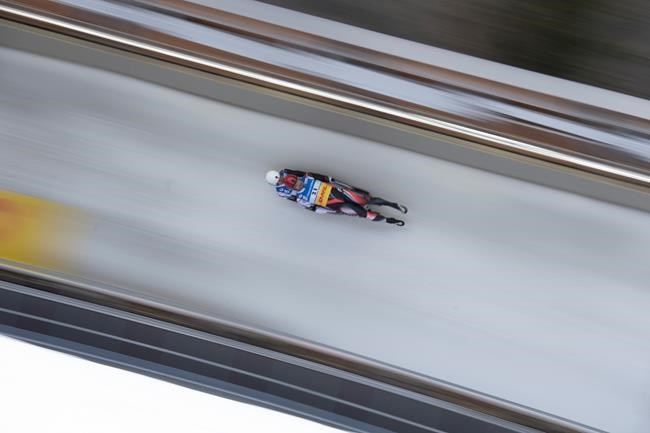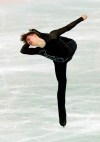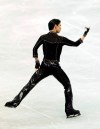Next generation of Canadian luge recruits get a snowy, trackless start in Calgary
Advertisement
Read this article for free:
or
Already have an account? Log in here »
To continue reading, please subscribe:
Monthly Digital Subscription
$0 for the first 4 weeks*
- Enjoy unlimited reading on winnipegfreepress.com
- Read the E-Edition, our digital replica newspaper
- Access News Break, our award-winning app
- Play interactive puzzles
*No charge for 4 weeks then price increases to the regular rate of $19.00 plus GST every four weeks. Offer available to new and qualified returning subscribers only. Cancel any time.
Monthly Digital Subscription
$4.75/week*
- Enjoy unlimited reading on winnipegfreepress.com
- Read the E-Edition, our digital replica newspaper
- Access News Break, our award-winning app
- Play interactive puzzles
*Billed as $19 plus GST every four weeks. Cancel any time.
To continue reading, please subscribe:
Add Free Press access to your Brandon Sun subscription for only an additional
$1 for the first 4 weeks*
*Your next subscription payment will increase by $1.00 and you will be charged $16.99 plus GST for four weeks. After four weeks, your payment will increase to $23.99 plus GST every four weeks.
Read unlimited articles for free today:
or
Already have an account? Log in here »
Hey there, time traveller!
This article was published 19/03/2021 (1737 days ago), so information in it may no longer be current.
CALGARY – Tobogganing down a snowy hill isn’t how three-time Olympian Tristan Walker got his start in luge, but Luge Canada’s recruitment has come to that without access to a sliding track in Calgary.
A 100-metre snow course with two turns carved into a hillside at Canada Olympic Park is where children aged 10 to 14 are getting their first taste of luge in hopes they’ll like it.
Less than a kilometre to the west is the sliding track built for the 1988 Winter Olympics. It’s been closed for two years awaiting a $25-million renovation.

Sam Edney, now Luge Canada’s high-performance manager, and Walker were members of the Canadian team that won an Olympic relay silver medal three years ago in Pyeongchang, South Korea.
At 13 and nine years old respectively, Edney and Walker slid the bottom section of Calgary’s track on their first day of “Discover Luge” camps at COP.
“My first exposure to the sport of luge was on the track built for the 1988 Olympics,” Walker said.
“It was not a path to the Olympics for me at that point in time. As my dad says, it was $25 to get me out of their hair for an afternoon.”
The children signing up for this month’s recruitment camps slide down the “natural luge” snow track on modified luge sleds.
There is an international natural luge racing circuit, but it isn’t an Olympic event.
Calgary’s recruitment camps give youngsters a taste of the sleds, but not the artificially-frozen track.
“We’re trying to expose as many people to the sport as possible with the current scenario that we’ve faced,” said Edney, a four-time Olympian.
“There’s no question having that track closed is a big blow to our program.
“My biggest enjoyment was, you’re essentially in this frozen water slide and you get to race down it against your competitors, even when it’s your first weekend trying it.
“We’re trying to mimic that as much as possible here with what we have at the natural luge track, but it’s definitely not the same exact feeling or exhilaration you get on the artificial track.”
Calgary’s urban sliding track is the only one in the world built in a city of over a million people. Others are more remote.
It’s been the home of the national bobsled, skeleton and luge teams for over three decades. The teams draw heavily from a local population.
Canadians have won a combined eight Olympic medals in bobsled and skeleton since 1988, including four gold.
Canadian lugers won Olympic medals for the first time in Pyeongchang with the relay silver and Alex Gough’s bronze in women’s singles.
The Whistler, B.C., sliding track built for the 2010 Winter Olympics is newer, but situated in a less-populated ski town.
“Still having that track in Calgary is huge,” Walker said. “As good as the track is in Whistler, there’s just not enough people there.
“It’s too far for families in Vancouver to come to for daily or weekly training sessions for a nine and 10-year-old athlete.”
According to archives at WinSport, formerly the Calgary Olympic Development Association, the cost to build Calgary’s track was $18.8 million.
The provincial and federal governments have committed a combined $17-million to a renovation that would replace the refrigeration system and alter the upper portion of the track.
WinSport, whose revenues at COP have been dented by the COVID-19 pandemic, needs to come up with another $8 million to complete the reno.
The caretaker of a large portion of Calgary’s ’88 legacy says the government funding remains in place and WinSport remains committed to the renovation.
“We have in no way given up on the project,” WinSport said in a statement.
In the meantime, 10-year-old Scarlett Jochumsen has returned to recruitment camps several times to navigate the snow track.
“Me and my dad usually every winter watch it, so I knew I really wanted to try it,” Jochumsen said. “It’s just fun. I like the speed and how you have to learn to turn in different ways.”
This report by The Canadian Press was first published March 19, 2021.










